The Genesis of Unichain
Unichain could signal the start of Ethereum’s decline as dominant protocols like Uniswap pull value and activity away, reducing Ethereum to a mere settlement layer.
Uniswap's influence is undeniable.
It is the largest DEX, dominated with millions of users and a significant portion of Ethereum's liquidity flowing through its protocols.
At last, Uniswap's announcement of launching its own blockchain, Unichain. This move possibly signifies a strategic shift in the blockchain paradigm—from the traditional Fat Protocol Thesis to an upcoming Fat Application Thesis.
As Uniswap aims to consolidate its dominance, this development raises critical questions about Ethereum's future, the value of ETH as an asset, and the potential reconfiguration of DeFi liquidity and user experience.
Here I note down some of my thoughts and findings 👇
Key Highlights:
Strategic Shift to Fat Application Thesis
Uniswap gains control over its own blockchain with Unichain, capturing more value from transaction fees and infrastructure.
Solving Scalability with Flash Blocks and TEEs
Faster transactions (200-250 ms) and reduced gas fees improve user experience and network performance.
MEV Minimization
Reduced MEV exploits through fair gas auctions, potentially saving users up to $1 billion annually.
Liquidity Consolidation
Centralized liquidity hub on Unichain reduces fragmentation and enhances pricing efficiency across Layer 2s.
Impact on Ethereum’s Role
Supports Ethereum's rollup-centric roadmap, reinforcing ETH's position as the secure settlement layer. (controversial take)
Enhanced Security via Unichain Verification Service
Increased network integrity and decentralization by involving UNI token holders in transaction validation.
New Competitive Landscape in DeFi
Sets a example for other DeFi applications to launch their own chains, driving vertical integration and infrastructure control.
Uniswap's Dominance in DeFi: Through Analytics
Uniswap has been a linchpin in the DeFi sector, commanding a significant market share:
Market Share: As per Dune Analytics, Uniswap holds approximately 46% of the total DEX trading volume on Ethereum.
Cumulative Trading Volume: Uniswap has surpassed $1.7 trillion in cumulative trading volume since its inception in 2018.
User Base and Adoption
Unique Unique Trader: Over 71.5K unique traders have interacted with Uniswap's smart contracts.
Daily Active Users: Uniswap boasts a current 1.2M daily active users, highlighting its widespread adoption.
Total Value Locked (TVL)
TVL: Uniswap's Total Value Locked stands at approximately $6 billion, making it one of the top DeFi protocols by liquidity.
Why Uniswap is Building Unichain
Motivation to Address Scalability Through Layer 2 Solutions
Ethereum's scalability issues are overly well-documented.
High gas fees and slow transaction times have hindered user experience and limited the network's capacity to handle a growing user base.
The rollup-centric roadmap adopted by Ethereum aims to alleviate these problems by shifting most transactions off the main Ethereum chain (Layer 1) onto Layer 2 (L2) solutions, which can process transactions more efficiently.
Unichain is built using the OP Stack, the open-source framework developed by Optimism, and is designed to operate within the Superchain—a network of interoperable blockchains that share common standards.
By leveraging this technology, Unichain aims to solve the following problems:
Addressing Scalability and Performance
Ethereum's network congestion and high gas fees have been persistent hurdles. Uniswap's move to Unichain aims to:
Enhance Transaction Speed: Targeting block times of 200-250 milliseconds, significantly faster than Ethereum's average of 12-15 seconds.
Reduce Transaction Costs: Lower fees make DeFi more accessible to a broader user base.
Control Over Infrastructure and Customization
Operating on its own blockchain allows Uniswap to:
Implement Protocol-Level Optimizations: Tailor the blockchain to suit Uniswap's specific needs, such as customized transaction ordering.
Introduce Advanced Features: Implement innovations like Flash Blocks and MEV minimization strategies.
Reducing Liquidity Fragmentation
By creating a centralized liquidity hub, which users of Uniswap would benefit from:
Consolidated Liquidity Pools: Unichain aims to aggregate liquidity currently spread across multiple Layer 2 solutions and sidechains.
Improved Pricing and Slippage: Deeper liquidity leads to better pricing and reduced slippage for traders.
The Shift from Fat Protocol to Fat Application Thesis
TLDR
Fat Protocol Thesis: Suggests that in blockchain ecosystems, the protocol layer (e.g., Ethereum) captures the most value because it underpins all applications.
Fat Application Thesis: Proposes that dominant applications can capture more value by owning more of the technology stack.

Fat Protocol Thesis:
The Fat Protocol Thesis was first articulated by Joel Monegro in 2016. It posits that in blockchain ecosystems, the majority of value accrues at the protocol layer rather than the application layer. This is in contrast to the traditional Internet model, where the application layer (e.g., Facebook, Google) captures most of the value, and the underlying protocols (e.g., TCP/IP, HTTP) are relatively "thin" in terms of value capture.
Key points of the Fat Protocol Thesis:
Value Accrual: Protocol tokens (like ETH for Ethereum) appreciate in value as they are integral to the network's operation, and their scarcity combined with network effects drive demand.
Network Effects: As more applications and users build on a protocol, the protocol itself becomes more valuable, reinforcing its dominance.
Composability: Applications are built atop these protocols, benefiting from their security and decentralization but capturing less value individually.
Fat Application Thesis:
The Fat Application Thesis challenges this notion, suggesting that dominant applications can capture significant value by owning more of the technology stack, effectively "moving down" the stack. This thesis is based on the idea that applications can differentiate themselves and create moats through proprietary features, user experience enhancements, and control over infrastructure.
Key points of the Fat Application Thesis:
Value Capture at the Application Layer: Applications can capture more value by integrating vertically, owning not just the interface but also parts of the underlying infrastructure.
Differentiation: By controlling more of the stack, applications can offer unique features and optimizations not available to competitors.
User Experience: A focus on seamless, efficient, and user-friendly experiences can drive adoption and loyalty, further increasing the application's value.
Uniswap's Strategic Shift
By launching Unichain, Uniswap is:
Moving Down the Stack: Gaining control over the underlying protocol to capture more value.
Enhancing Value Capture: Potentially increasing revenue through transaction fees and other mechanisms.
Strengthening Ecosystem Control: Directing the development and innovation within its ecosystem.
How the Shift Towards Fat Application Thesis Will Play Out
Increased Competition Among Applications
The shift towards the Fat Application Thesis, as demonstrated by Uniswap's launch of Unichain, will significantly reshape the blockchain ecosystem. This movement may lead to :
Increased competition among applications, with other successful DeFi platforms following Uniswap's lead in launching their own chains.
Such vertical integration allows applications to gain control over their infrastructure, offering enhanced performance and capabilities beyond just user interface improvements.
This could foster a new competitive landscape where applications differentiate themselves not only through features but also through the efficiency and scalability of their underlying infrastructure.
Ecosystem Fragmentation vs. Consolidation
However, this shift brings both risks and opportunities concerning ecosystem fragmentation and consolidation.
On one hand, the proliferation of application-specific chains could lead to fragmentation, making interoperability more challenging and potentially disrupting the cohesive user experience crucial for mass adoption.
On the other hand, dominant applications might attract smaller projects to build within their ecosystems, leading to new hubs of activity and a possible consolidation of resources and user bases.
This evolution could impact the value dynamics between the protocol and application layers. If applications begin to capture more value, the underlying protocols may see a relative decline in dominance, with network effects shifting toward these application ecosystems as users and liquidity concentrate around them.
Impact on Protocol Layer Value
The shift towards the Fat Application Thesis poses a challenge to the traditional dominance of protocol layers.
As applications like Uniswap launch their own chains, they begin to capture more value—reducing reliance on the underlying protocols for transaction fees and infrastructure.
This could lead to a shift in network effects, as users and liquidity concentrate around these application-specific ecosystems rather than the broader protocol layer.
As a result, protocols like Ethereum may see a relative decline in value capture, with dominant applications becoming the new centers of activity and influence in the blockchain ecosystem.
Implications for Ethereum and ETH as an Asset
The launch of Unichain has sparked debates about the future role of Ethereum's mainnet and the value accrual for ETH as an asset. I could argue that migrating DeFi activities to Layer 2 solutions could diminish the importance of the mainnet and negatively impact ETH's value.
Another perspective here to consider:
However, proponents suggest that this evolution aligns with Ethereum's long-term vision. By serving as the secure, decentralized settlement layer, Ethereum mainnet can focus on providing data availability and finality, while Layer 2 solutions handle scalability and user-facing applications. This symbiotic relationship could, in fact, enhance ETH's value proposition as it becomes the foundational asset underpinning a vast network of Layer 2 chains.
One of my takes here:
Potential Negative Impact on ETH
Reduced Demand for ETH: If Unichain uses a different native token for gas fees, demand for ETH could decrease.
Lower Transaction Fees on Ethereum: Migration of activity to Unichain may lead to reduced fees collected by Ethereum validators.
Liquidity Drain: Consolidation of liquidity on Unichain could reduce liquidity on Ethereum mainnet and other Layer 2s.
@0xmughal also shared his findings/thoughts here:
Counterarguments: Silver Linings for Ethereum
Alignment with Ethereum's Rollup-Centric Roadmap: Unichain still relies on Ethereum for security and data availability.
ETH as a Settlement Layer: Ethereum could strengthen its position as the foundational settlement layer for multiple Layer 2s.
Potential Increase in Ethereum Usage: Enhanced scalability might attract more users to the ecosystem overall.
Technical Innovations in Unichain
Unichain introduces a suite of technical innovations designed to enhance both speed and security for its users.
These advancements are Flash Blocks and Trusted Execution Environments (TEEs), which:
Enable sub-second transaction finality
Reducew the risk of manipulation, ensuring faster and safer transactions for users.
Another critical innovation is Unichain’s approach to MEV (Maximal Extractable Value) minimization.
Through a fair priority gas auction system, Unichain ensures transparent and equitable transaction ordering, reducing the prevalence of harmful MEV exploits such as sandwich attacks.
This system is expected to save users up to $1 billion annually by curbing exploitative practices that often lead to higher trading costs.
To further reinforce security and decentralization, Unichain incorporates a Verification Service, where a network of validators continuously verifies the actions of the sequencer responsible for transaction ordering.
This additional layer of security not only ensures the integrity of the network but also invites community participation, allowing UNI token holders to engage in network validation, creating a more decentralized and robust ecosystem.
Conclusion
Unichain is a bold move by Uniswap that cements its position as a DeFi leader and redefines the way decentralized applications can operate. By directly addressing scalability, minimizing MEV losses, and centralizing liquidity, Uniswap is taking control of its future in a way few others have dared. This strategic shift challenges Ethereum’s traditional role but fits seamlessly with its rollup-centric vision.
I see this as a pivotal moment for DeFi. Uniswap’s decision to control more of the stack feels like the evolution we’ve been waiting for in the space. I expect other DeFi projects will follow suit, leading to a reimagining of how value is created and captured. Unichain represents the next wave of decentralized finance, and I believe we’re just seeing the start of what will be a ride for Defi.




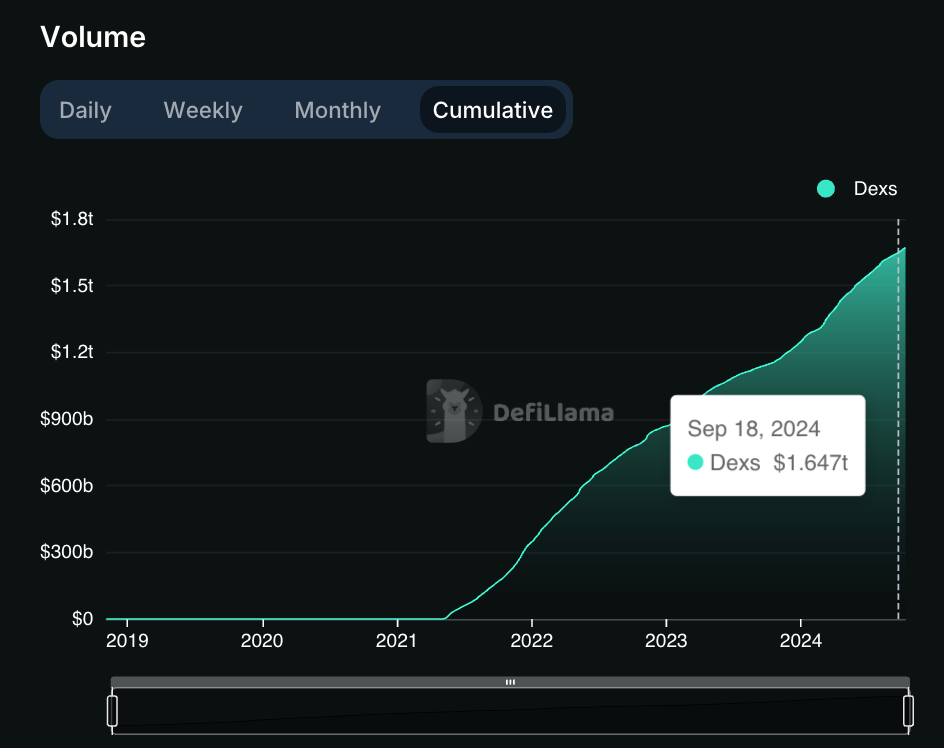

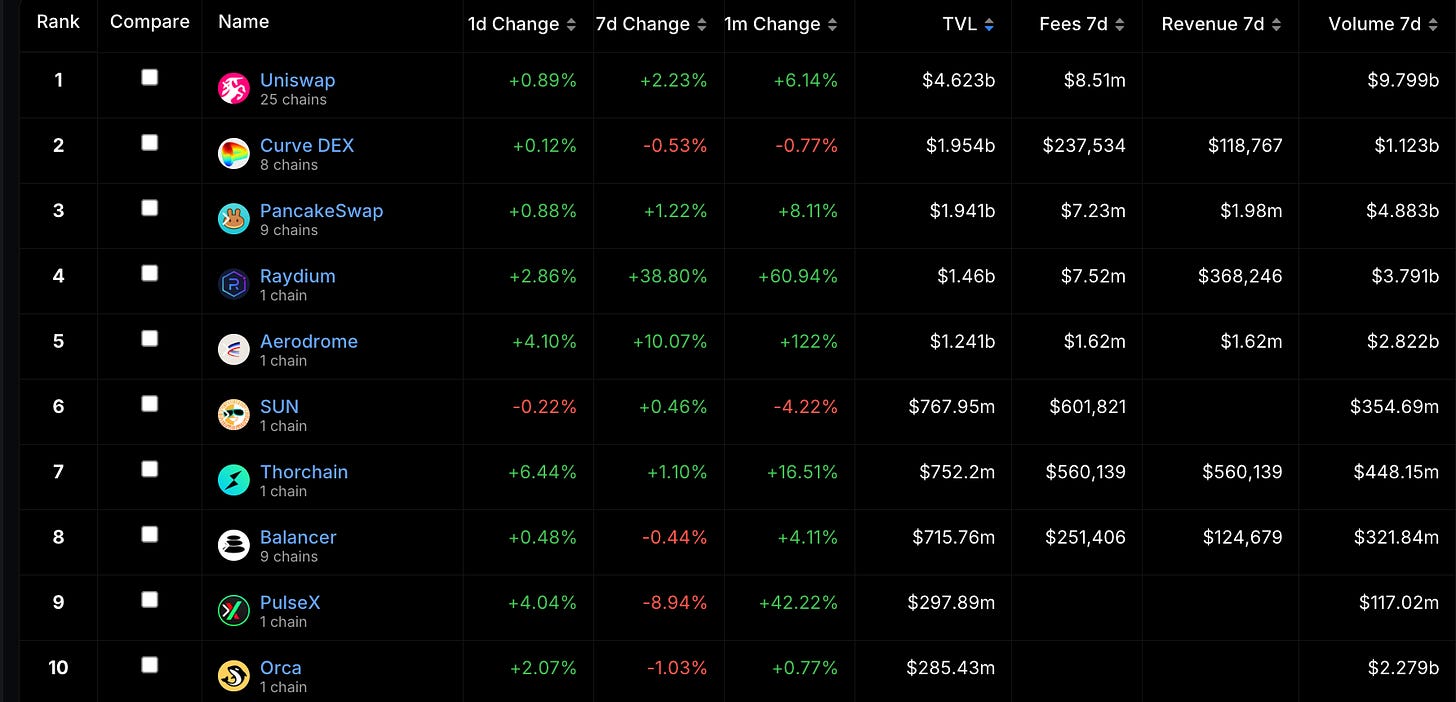
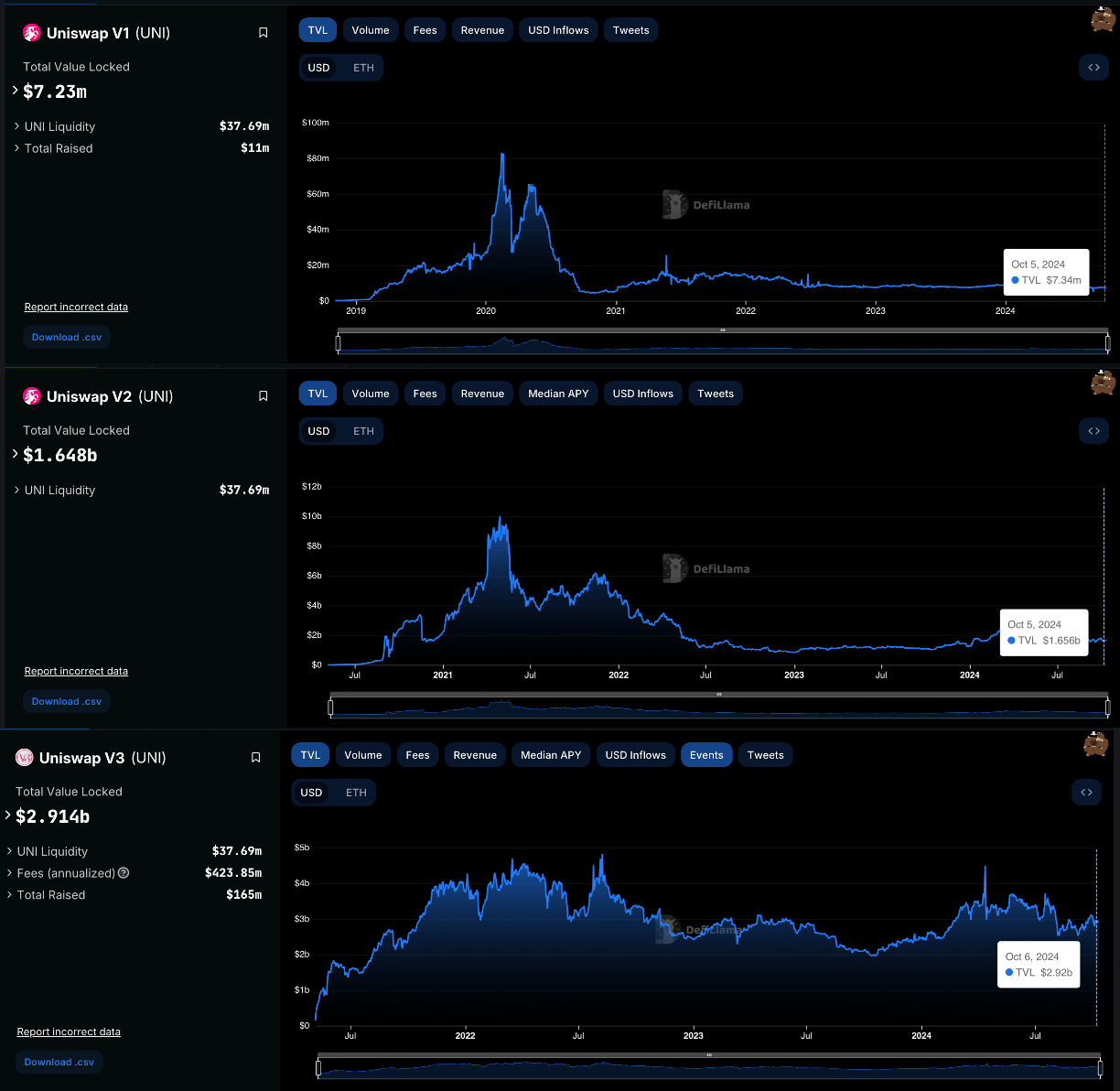
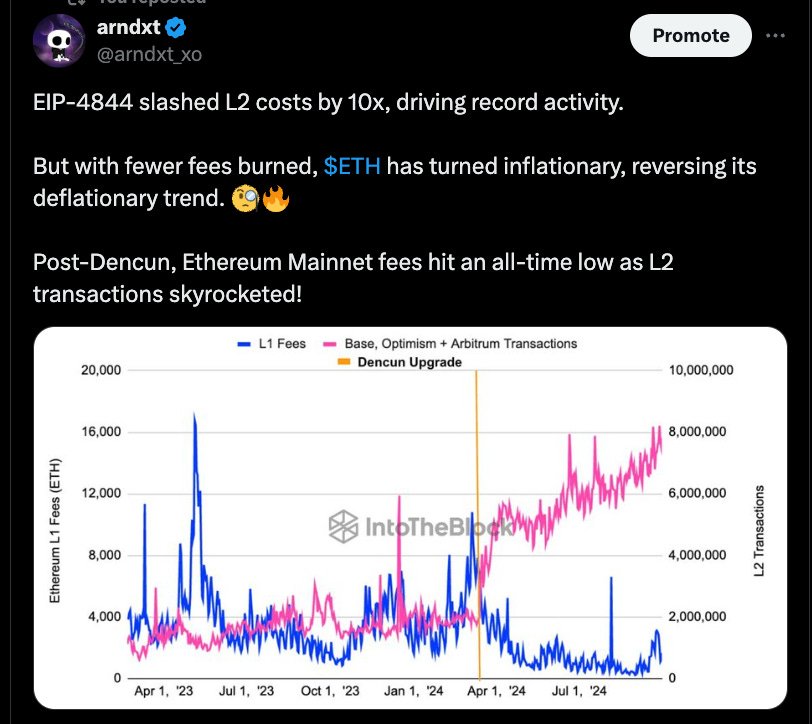
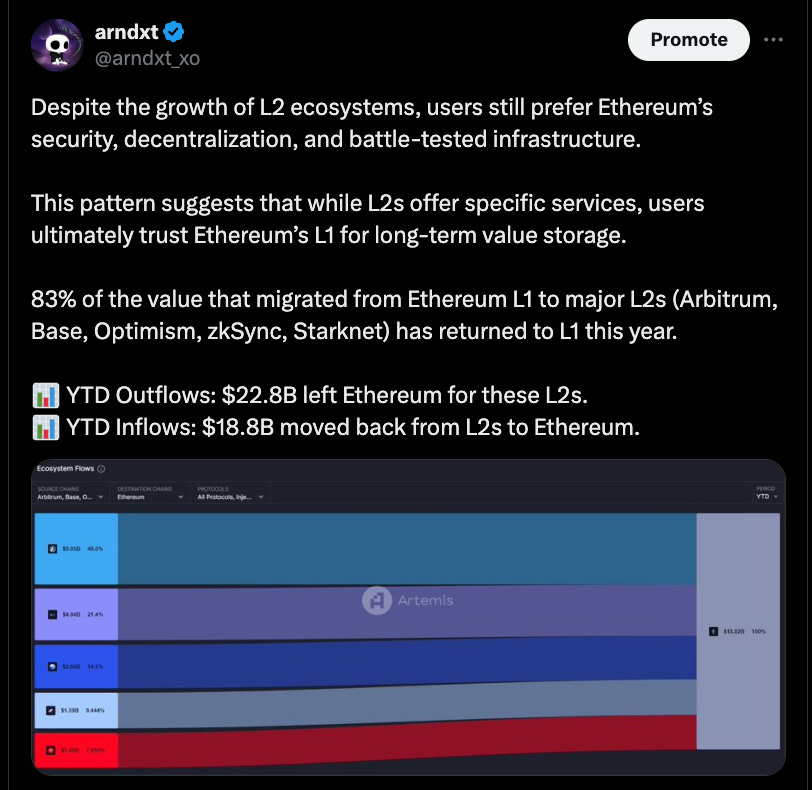

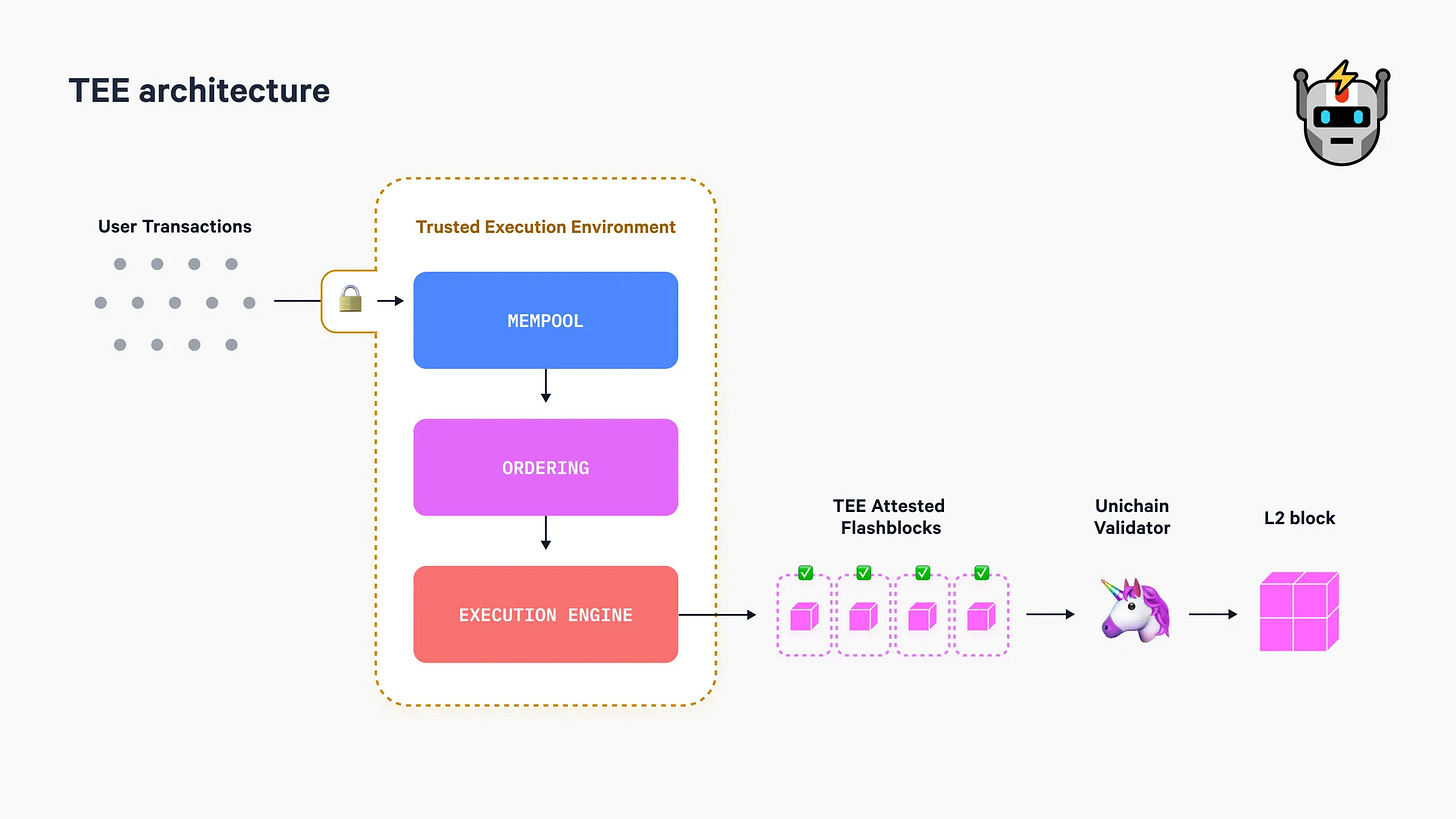
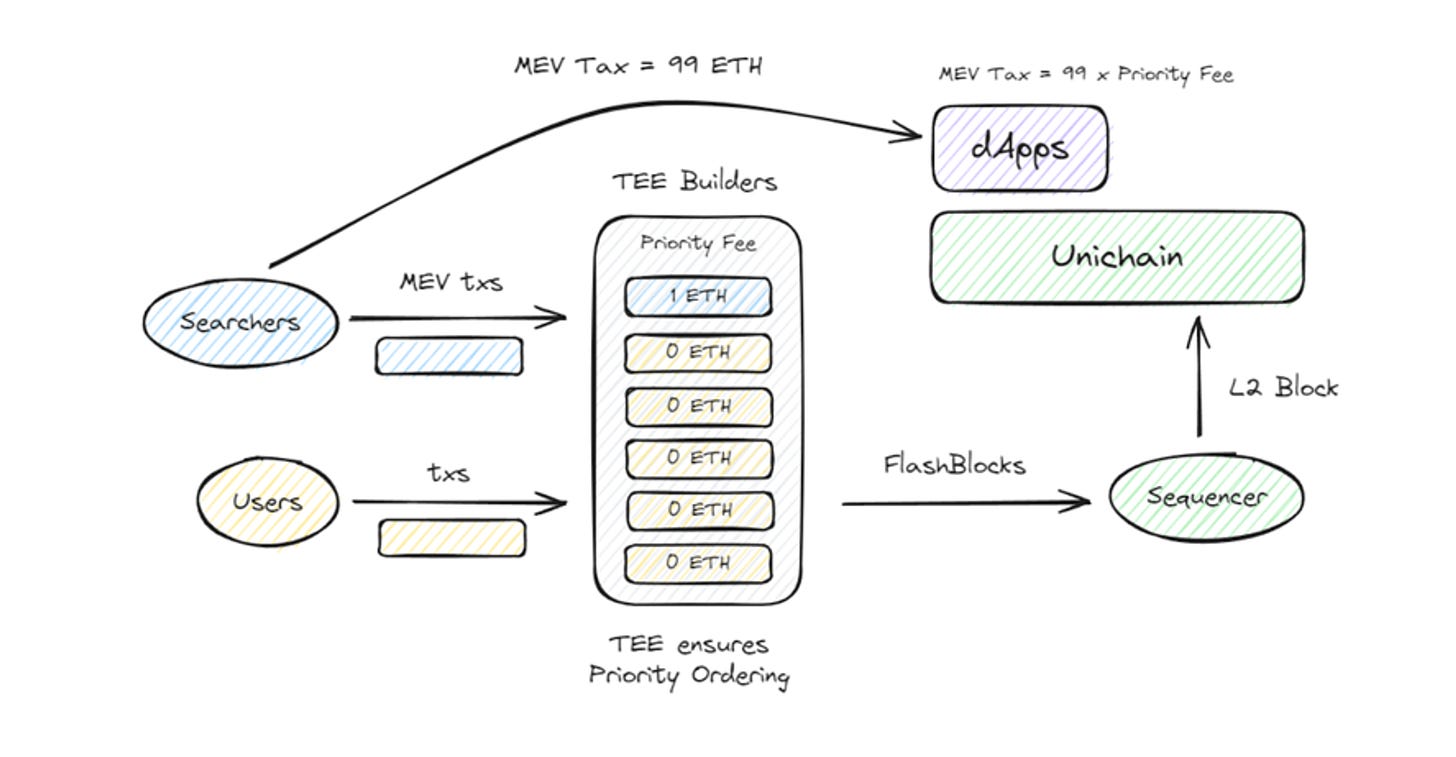
great article! ✊